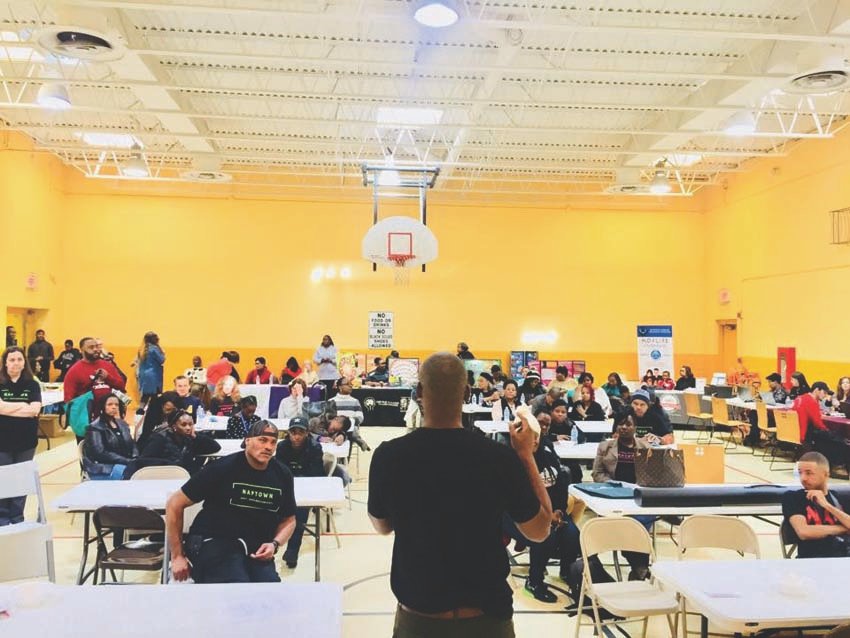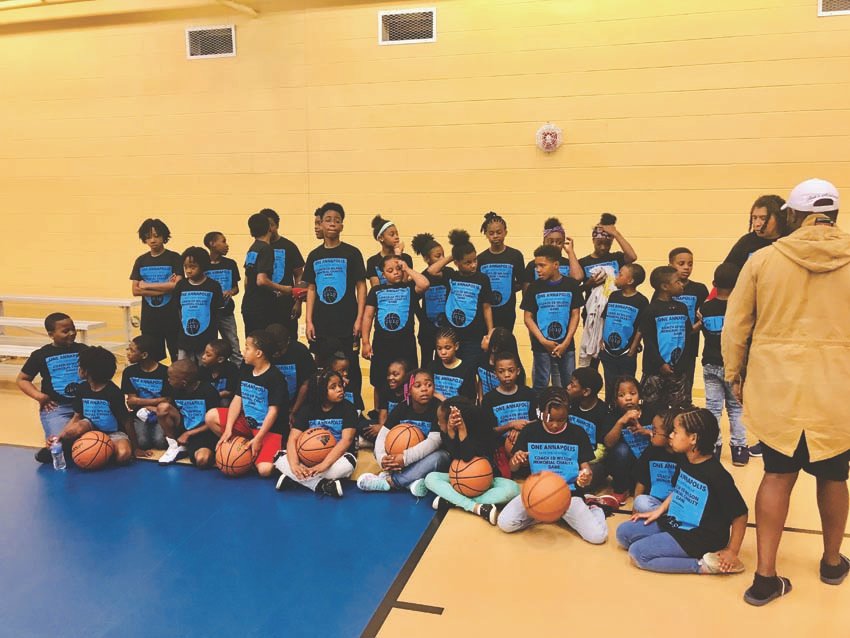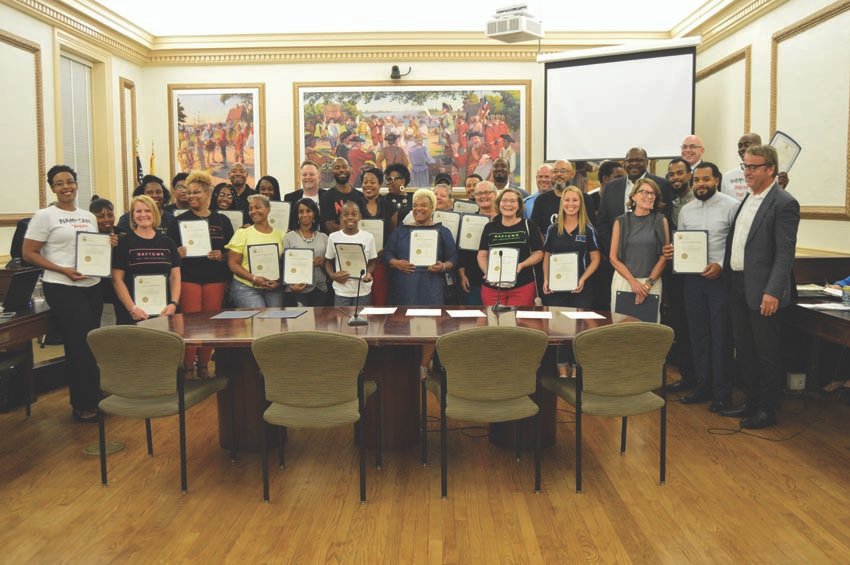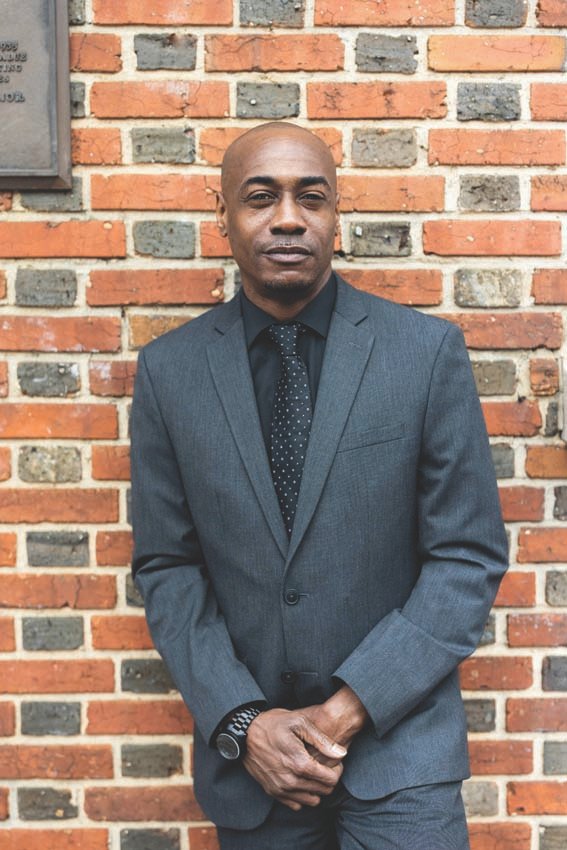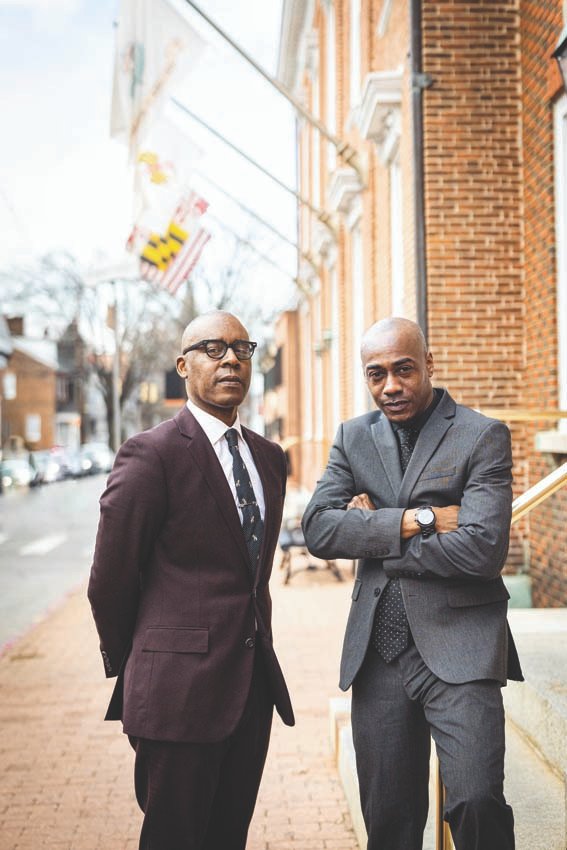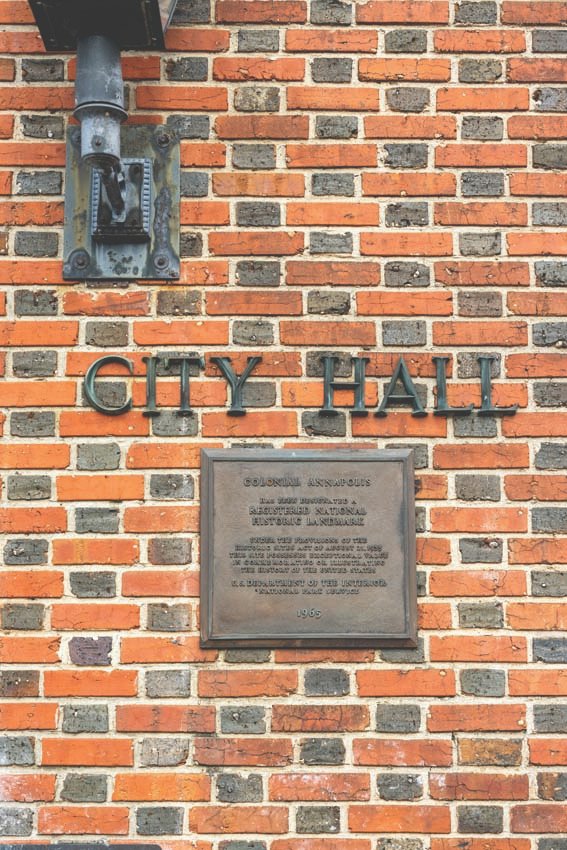+ By Andrea Stuart + Photos by Mary Ella Jourdak
Variations of La Calavera Catrina (Elegant Skull) snaked between vendors at the Maryland Hall for the Creative Arts during the 2021 Día de los Muertos (Day of the Dead) celebration. Adorned in embroidered Puebla dresses, their skull-painted faces rimmed in rhinestones and their heads topped with vibrant flowers, a host of Annapolitans honored the cycle of life in the way the Aztecs and Nahua people of Mexico did more than 3,000 years ago: with food, drink, dance, and respect.
The annual Day of the Dead celebration is one of myriad programs organized by OneAnnapolis to create inclusivity and encourage engagement between all Annapolitans while honoring cultural diversity.

An ancillary arm of the mayor’s office, OneAnnapolis operates on the guiding principle of advancing a greater level of public participation between residents, organizations, neighborhoods, and communities so that they can work collaboratively to address and resolve community-level issues. The goal is to align the services, policies, and priorities of the Mayor’s Office more closely with the needs of all the people of Annapolis.
In 2016, William F. Rowel, senior advisor to the mayor/public engagement specialist, and Adetola Ajayi, African American community services specialist, began evaluating the needs of Annapolitans. They discovered economic and cultural disparities between the city’s eight distinct neighborhoods, corresponding wards, and marginalized cultural subsets. “What we observed was a [perceptible] level of disconnect as it relates to certain populations within our city,” says Rowel. “There was a lack of synergy throughout communities in all economic backgrounds.”
Symptomatic of the disparity, there was a noticeable lack of interest on the part of citizens and city officials to learn more about how to provide services in a more meaningful way. “There was such a lack of programming and access to resources for citizens, which created palpable apathy. There was clearly a need to connect Annapolitans by building trust, strategizing, and collaborating in ways that build power and unite voices,” says Rowel.
Enter OneAnnapolis. A platform of programming designed to put connection above competition, it includes social and cultural awareness programs and events, public and private partnerships, advocacy that shapes program and policy development, civic engagement, education campaigns, and applied research. Perhaps one of the most significant outcomes is the way the city now uses information to develop and support OneAnnapolis’ efforts.
Ajayi describes the process as a way of working backward. “Typically, a city government will hold public meetings and conduct outreach only after it has completed its internal meetings,” he says. “Now, it invites experts and citizens to the internal meetings before issues are presented to the public.” For example, the city might bring community members in for a planning meeting to help define an issue and discuss potential resolutions before going public with a proposal. As a result, there is better engagement and more meaningful conversations between the city and its citizens. In addition to clearly defining issues that are important to the community, this process creates transparency, according to Rowel and Ajayi.
An essential component of the OneAnnapolis model is neighborhood civic engagement. In addition to years of conducting research, Ajayi has spent much of his time bringing citizens into the conversation by conducting small community-centric events throughout Annapolis.
The outreach efforts have been helpful on many levels. The city staff have assured individuals within the communities that their feedback is crucial. The interactions also help to inform citizens as to what is happening in their communities. “People don’t know what they don’t know, and they become disconnected when they think their voices don’t matter,” says Ajayi. “But once they know you respect and want their feedback, they will come. They will speak up.”

The Hispanic, African American, and LGTBQ outreach programs, each of which is open to any individual who identifies with those demographics, are results of such work. “People think there are solid lines in ethnicity,” says Rowel. “But we aren’t all defined by just one.” The city has established partnerships and services that are mindful of these distinctions and recognize how people self-identify and to which communities they are connected.
The feedback loop created by these outreach efforts has informed much of the Mayor’s Office programming. The Naptown Anti-Dope Move[meant] (NAM)—a data-driven grassroots outreach initiative coordinated by the Mayor’s Office of Engagement to raise awareness about the opioid crisis in the African American communities of Annapolis—is one such strategy. According to Ajayi, it changed the hearts, minds, and souls of Annapolitans about substance abuse. “We hosted biweekly focus groups in neighborhoods most affected. People collaborated and coordinated to share their experiences.” From there, successful programs were developed to assist substance abuse victims and their families. Statistics from the OD Free Annapolis website speak to the program’s success. In 2018, African Americans accounted for 88% of overall fatal overdoses. In 2019, one year after NAM began, African Americans accounted for 46% of fatal overdoses.
Events and activities supported by the city bridge many of the OneAnnapolis work plan initiatives by cultivating awareness through involvement, education, and entertainment. In April, at the Pip Moyer Recreation Center, the Flowers Festival has featured foods and traditions of Latin America, as well as Flamenco dancers donning traje de flamenca or sevillana dresses. It celebrates the emergence of spring while honoring the diversity and richness of Annapolis’ Latin community.
In February, the city has organized a Dr. Martin Luther King, Jr. parade followed by a diaspora festival. Each year, it displays 76 flags from countries that represent African nations or places where significant populations of African descendants reside, honoring and celebrating the heritage of people of African descent. This year, the city hosted The State of Black Annapolis, a three-part in-person and virtual speaker series featuring experts in the fields of economics, education, election, and entertainment.
In 2019, the city hosted its first Pride Parade & Festival, honoring the LGTQ+ community and diversity of all people. There are plans to hold the event on June 4 this year.
Annapolis strengthens the celebration of diversity through collaborations with institutions and organizations in beautification efforts, such as with murals that are relevant to each community. “OneAnnapolis’ inaugural mural project was the Benjamin Franklin mural,” says Ajayi. The piece, by Future History Now with Stanton Center youth, provided the backdrop for the West Street stage where, in 2017, Mayor Buckley and newly elected members of City Council were sworn in.
Rowel reminds that Annapolis has a history as a colonial city. “Part of our job is to balance preservation with innovation,” he says. As such, with OneAnnapolis, the idea is to create a cycle of acting, learning, and aligning that results in better engagement, ideas, and solutions that enhance the city government’s impact.
Through a dynamic range of offerings, from community and listening sessions to clinics, meetings, concerts, and special events, OneAnnapolis strives to inspire Annapolitans to live, work, and play in the community. “We want the youth of Annapolis to see opportunities here and to get involved and want to stay,” says Rowel. “For them to know there is something here for them after high school.” OneAnnapolis is innovating by learning from its past as it plans for its future. █







